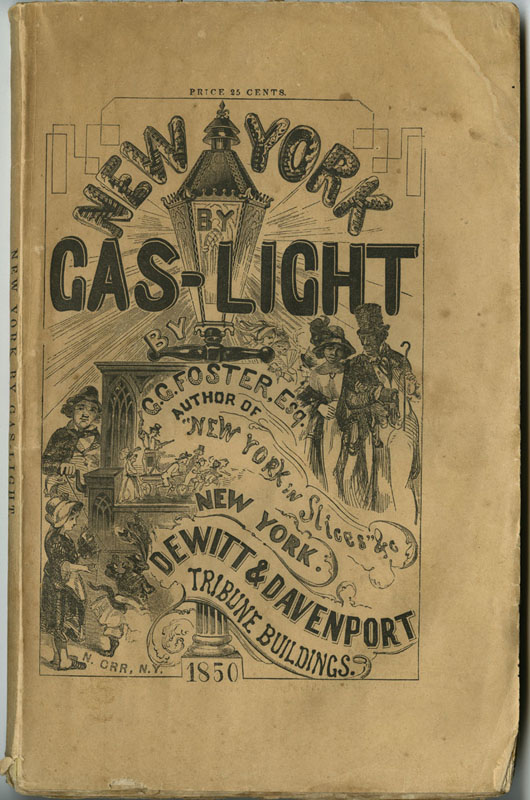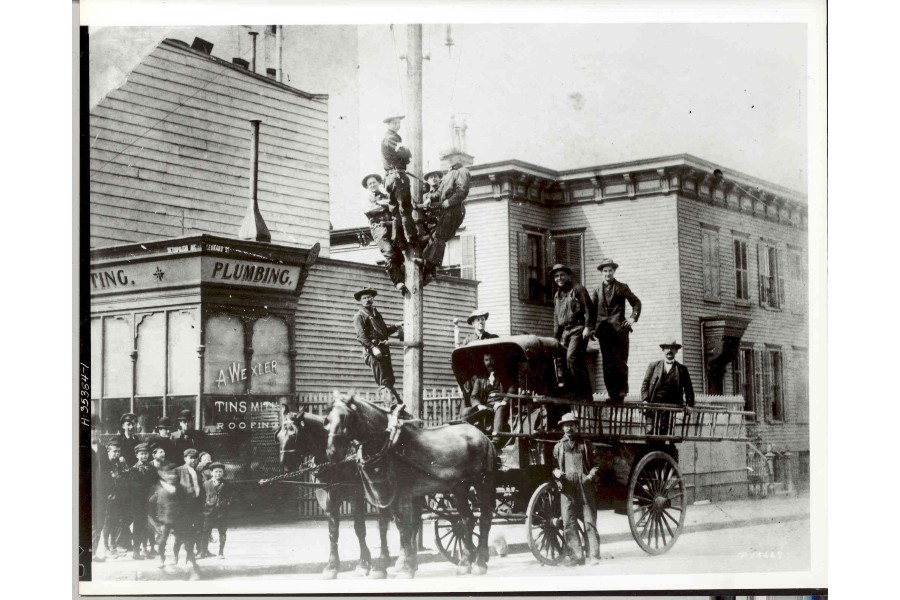
The legendary Harlem Gas Light Company the precursor to ConEdison was founded in Harlem, New York, in 1855.
Archives write, the nation’s largest gas utility company, Consolidated Edison, Inc., known as “Con Edison” or “Con Ed” – began on November 11th, 1884 when six New York City gas-light companies merged.
Archives continue, But Con Edison can trace its history more than six decades earlier to the New York Gas Light Company. All provided gas from their nearby plants distilling coal.
“Before the Brooklyn Bridge spanned the East River, before the Statue of Liberty first graced New York Harbor, and before skyscrapers rose above New York City’s streets, the utility companies that would eventually become Con Edison were already building the energy infrastructure needed to fuel and sustain the city’s growth.” Published in 1850, when the population of New York reached 500,000, the book “New York by Gas-Light” featured bowling alleys, dance halls, saloons, and theaters. In 1823, New York Gas received a charter from the New York State Legislature to serve all of Manhattan south of an east-west line created by Grand, Sullivan, and Canal Streets. “Like most early gas companies, New York Gas would focus its efforts on street lighting, in this case, supplementing or replacing the whale-oil lamps installed by the city beginning in the 1760s”.
Manufacturing gas from coal, in 1833 the Manhattan Gas Light Company began to provide service to Manhattan above Grand and Canal streets. Another “coal gas” company came on the scene in 1855 when the Harlem Gas Light Company received a city franchise to serve customers north of 79th Street in Harlem.

In 1858, the Metropolitan Gas Light Company got a city-wide charter – and went into direct competition with the existing gas companies. Over time, more companies were organized, including New York Mutual Gas Light in 1866 and the Municipal Gas Light Company in 1876.
“With six major gas companies serving New York City, the streets were constantly being torn up by one company or another installing or repairing their own mains – or removing those of a rival.” From time to time, work crews from competing companies would inadvertently meet on the same street and literally battle for customers, giving rise to the term “gas house gangs.” In May 1880, the city’s major gas companies reached an agreement on the price of gas and ended the construction of competitive mains,” the website adds. “It was a business arrangement that would be unlawful today but was legal, and sensible, at the time.” Just as company executives were looking forward to the financial stability and profitability the agreement would bring, a new problem was brewing. In December 1879, Thomas Edison demonstrated his newest invention – the incandescent light bulb. As electric lamps quickly became the light of choice, the New York gas companies countered by finding new uses for their product – especially using gas for heating and cooking. But the future survival of the gas business seemed to depend on joining forces. and the moves of the elected.
Another quote reads, “Tweed and his friends also garnered huge profits from the development of the Upper East Side, especially Yorkville, and Harlem. They would buy up undeveloped property, then use the city’s resources to improve the area – for instance by installing pipes to bring in water from the Croton Aqueduct – thus increasing the value of the land, after which they sold and took their profits. The focus on the east side also slowed down the development of the west side, the topography of which made it more expensive to improve. The ring also took their usual percentage of padded contracts and raked off money from property taxes.
Despite the corruption of Boss Tweed and Tammany Hall, they did accomplish the development of Harlem, though at the cost of tripling the city’s bond debt to almost $90 million.”
More from our Source, “Tweed bought a mansion on Fifth Avenue and 43rd Street, and stabled his horses, carriages, and sleighs on 40th Street. By 1871, he was a member of the board of directors of not only the Erie Railroad and the Brooklyn Bridge Company, but also the Third Avenue Railway Company and the Harlem Gas Light Company. He was president of the Guardian Savings Banks and he and his confederates set up the Tenth National Bank to better control their fortunes.”
Consolidated Gas Company resulted from the November 11th, 1884, merger of New York, Manhattan, Metropolitan, Municipal, Knickerbocker, and Harlem gas companies.

Through the years, the growing company acquired steam, gas, and electric companies (including Edison’s) serving New York City and Westchester County. It became the Consolidated Edison Company of New York in the mid-1930s. “By 1932, New York Edison’s parent company, Consolidated Gas, was the largest company in the world providing electrical service,” concludes the company website. “In 1936, with electric sales far ahead of gas sales, Consolidated Gas changed its name to the Consolidated Edison Company of New York, Inc.” Today, Con Ed distributes steam, electricity, and natural gas to more than 3 million customers in Manhattan, the Bronx, Queens, and most of Westchester County. The company serves a population of over 9 million.
Photo credit: 1) 1st Avenue, East Harlem, 1908, Source. 2) Published in 1850 when the population of New York reached 500,000, “New York by Gas-Light” featured bowling alleys, dance halls, saloons, and theaters (source). 3) Con Edison crew team (source).
Become a Harlem Insider!
By submitting this form, you are consenting to receive marketing emails from: . You can revoke your consent to receive emails at any time by using the SafeUnsubscribe® link, found at the bottom of every email. Emails are serviced by Constant Contact








